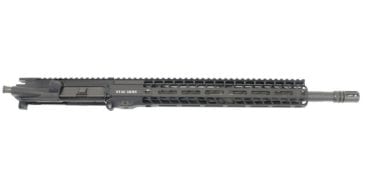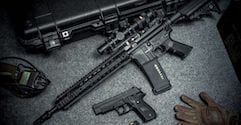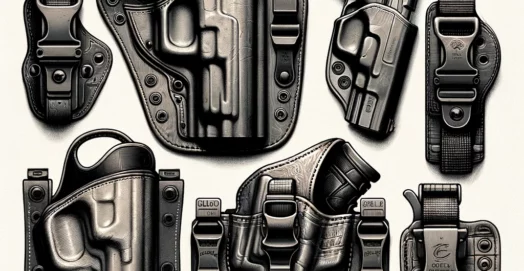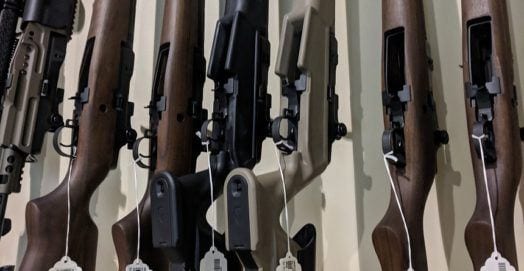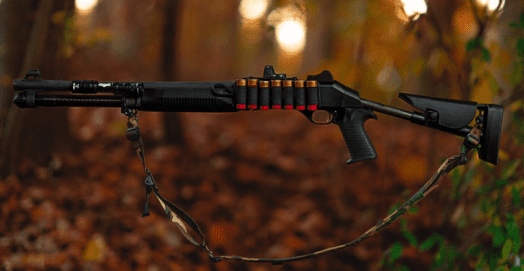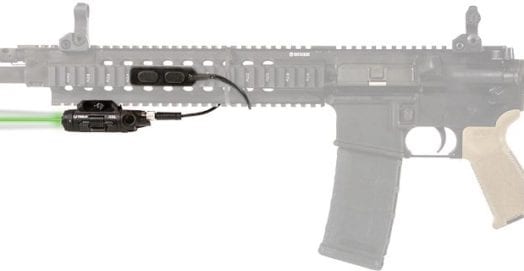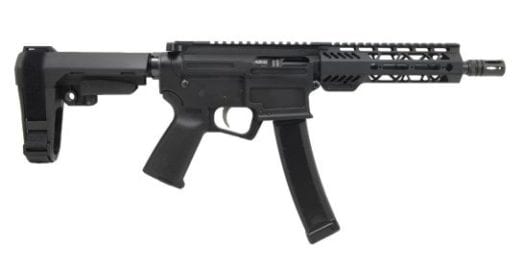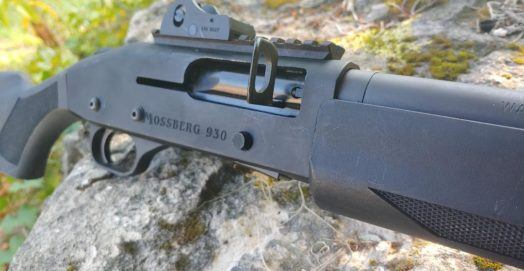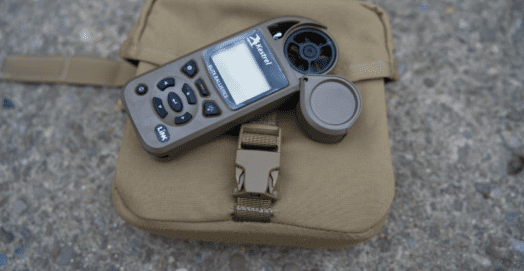.270 Winchester Guide (History, Ballistics, Ammo and Review)

Naturally, A weapon as revered as the .270 Winchester has a lot of history, as well as a lot of bad facsimiles. We’re going to fix that in today’s .270 Winchester guide.
If you’re a hunter, particularly in North America, you probably know quite a lot about the venerable 270 Winchester, in which case, we can’t tell you anything new in our .270 Winchester review. This legendary deer-slayer has been with us for almost 100 years now, and in that time it’s gained a reputation as one of the foremost hunting cartridges ever produced, especially for use against North American game animals like whitetail.
But how does the .270 stack up against more modern loadings like the .308, 300 WM, or even 6.5mm and 7mm variants? What makes this particular cartridge so effective, and so prized by veteran hunters? Is it worth picking up a new rifle in this chambering, or should new shooters look elsewhere?
I’m glad you asked. Let’s answer it now in our .270 Winchester guide.
Contents
History of the .270 Winchester
In 1923, Winchester began developing the .270 Winchester as a necked down version of the extremely popular .30-06 Springfield round that was taking the hunting world by storm (and had just seen popular use in WWI). Winchester released one rifle chambered in their new caliber: the Model 54.
At first, hunters didn’t really take to the .270 Winchester, with most sticking to their readily-available .30-06 loads for the most part…at least at first.
As time went on, especially during the years following WWII, the round slowly caught on with the gun-buying public, especially once the price of .30-06 ammo started going up due to the war.
Shooters and hunters such as the legendary Jack O’Connor popularized the round over the course of the next few decades, and by the 1960s, it was clear that the .270 Win had more than earned a spot in the hunter’s ammunition pantheon, right alongside the .30-06 it was based on.
.270 Winchester Guide: Modern Use and Ballistics
Today, the .270 Winchester is still going strong and is one of the most popular chamberings for hunting rifles around the world. It sees extensive use in North America and is also popular across the pond in Europe and even in Africa for smaller plains game.
As any .270 Winchester guide can tell you, the chief benefit of the .270 Winchester is an extremely flat trajectory that leaves it almost on par with modern 6.5mm, high-BC projectiles like the 6.5 Creedmoor. This makes it ideal for those longer, 300yd+ shots that are common in the American West and throughout much of sub-Saharan Africa.
Bullet sizes are typically between 100 and 160grs, with 150gr being the most popular for factory hunting loads due to its good mix of velocity and impact energy. There are some larger 180gr projectiles available primarily for handloading, but you do sacrifice some velocity here.
Then again, if you’re handloading and want to run a hotter powder charge you certainly can and get 150gr (ish) factory load velocities with a larger projectile. This is what I’d recommend if you’re going to be seriously going after moose.
Speaking of projectiles, newer higher BC bullets like Hornady’s awesome ELD-X and ELD-M lines, and Nosler’s Accubond line stretch the .270 Win’s range as a hunting caliber to even greater lengths and I can ensure you will reach the limits of most hunter’s ethical shooting ability.
And if you’re more into punching holes in paper, the newer .270 projectiles are more than capable of doing that as well. There’s always been a lot of interest in the .270 as a long-ranged round, and this new batch of bullets has furthered that interest and done a lot to help keep the cartridge relevant.
The 145gr ELD-X Precision hunter from Hornady has an insanely impressive ballistic coefficient of .526 (BC tells you how well a round bucks the wind, so a higher BC means less compensating for wind interference on longer shots).
It maintains a velocity over 2000fps all the way out to near-as-makes-no-difference 600 yards, and carries deer-slaying energy even further, with minimal drop, only 19 inches at 400 yards.
This makes for a very competent hunting round, as well as good long-range target round.
What’s the Best Use of .270 Winchester?
If you don’t have a .270, you should read on for your .270 Winchester review. If you already have a .270 Winchester, you have a lot of options. A lower weight bullet is great for hunting coyotes and other small game at some very impressive distances, 140gr and up bullets are wonderful for deer, elk, and the like, and the very heavy 180gr bullets can absolutely hammer hogs and larger game like antelope and moose.
What’s more, the modern bullets from Hornady, Barnes, and Nosler all keep the .270 competitive in the long range game, but a serious competitor is probably going to be better served by something in the 6mm or 6.5mm Creedmoor chamberings, or .300 Win Mag.
That’s not to say that .270 Win isn’t a great long range round, but for something like PRS competition, given equally skilled shooters, expect the edge to go to these other cartridges that are just a little more optimized for that kind of work.
Of course, there’s nothing stopping you from going out and competing with .270 Win and trying your luck, and the fact that nearly every rifle manufacturer is still chambering guns in .270 (and has been for fifty years or more) means that .270s are easily found at affordable prices on the secondary market.
I’ve killed two deer this year with a Winchester Model 70 that my father purchased for about $200 almost 20 years ago. Both at 300+ yards, both dropped within ten yards of where they were hit. Make no mistake, the .270 is a great hunting round for new and experienced hunters alike.
For long range shooting competitors though, I’d recommend one of the other rounds we discussed earlier for a new gun. If all you’ve got is a .270 though, by all means go for it. You might surprise yourself.
.270 Winchester Review: the Best .270 Winchester Rifles
If you’re looking for a .270 Winchester rifle, you have quite a few choices, from bolt-actions, to single-shots to lever-actions, and even some pump-action rifles like the Remington 7600. The weapons presented in our .270 Winchester review are most worth your time, but there are plenty more out there.
These are some of the more common ones that you’ll be able to get your hands on easily, but definitely don’t let that stop you from picking up something else that has a solid reputation.
Ruger No. 1
Let me get this out of the way right now: I love the Ruger No. 1. It is an absolutely excellent rifle with a rock-solid record as a premium choice for hunters the world over. It comes in just about every chambering imaginable (although only one chambering is produced each year).
While it may be difficult to find, call enough pawn shops and gun stores with a used section and you’re almost guaranteed to find one of these legendary falling-block single-shot rifles.
They’re accurate, quick-to-shoulder, and great for new and veteran hunters alike. The Ruger No.1 action is absolutely bomb-proof and if you want to really work on your marksmanship, there’s nothing quite like knowing you only have one shot before you have to reload.
Though the rifle is primarily aimed at big game hunters these days with chamberings all the way up to the .458 Lott so revered by those going after dangerous African game, .270 Win versions are common enough on the secondary market that its worth listing the rifle here.
Winchester Model 70
The venerable Winchester Model 70 is actually an upgraded version of the old Winchester Model 54. First released in 1936, this Mauser-inspired rifle has won the hearts and minds of hunters for decades.
This is the rifle that truly popularized the .270, so without a doubt, it deserves a spot on our .270 Winchester review. It would go on to earn the moniker of “The Rifleman’s Rifle” following WWII, and its adoption by many returning GI’s. In 1999 it was named “Bolt-Action Rifle of the Century” by Shooting Times, a title it well deserves given its popularity with the average hunter.
It is available today in many different chamberings, including of course the .270 Winchester, and is one of the more common sights in hunting lodges around the country, especially with older hunters. You can also find good examples from the late ’80s and early ’90s in pawn shops for $200 or less all day long. If you ever bump into me in a hunting lodge, particularly if I’m with my father, you’ve got a good chance of seeing me with one.
Ruger American Rifle
The Ruger American Rifle line and the accurized American Predator line represent some of the best values in hunting rifles today.
These guns come with Ruger’s awesome Marksman trigger that is user adjustable from just over 3lbs to 5lbs, and the guns themselves are extremely accurate right out of the box.
The barrels come free-floated and block-bedded from the factory, both common accuracy modifications among distance shooters, and are easily capable of around MOA accuracy, which is more than enough for hunting inside of 600 yards (I personally start having ethical issues with anything beyond that anyway, but that’s something you have to decide on for yourself).
Overall, with an MSRP of less than $5000 and a street price more in the neighborhood of $450, an American rifle is probably what I would pick up if I were looking for a new .270 Win rifle. The accurized Predator line isn’t currently available in .270 Win as of this writing, but that may change.
Tikka T3 Hunter
The Tikka T3 is a great option for both hunters and long-range target shooters alike. The Hunter line does a fantastic job of combining that classic hunting rifle look with modern machining and accuracy developments to bring the best of both worlds.
This is a great looking rifle that still shoots even better than it looks. At under 7lbs, it’s not too heavy for those long treks over difficult terrain after Bighorn sheep and the like, and yet it’s not so light as to make the .270’s recoil feel overly stout or punishing.
Tikka rifles are made in Finland, but their world-wide popularity has been gained on the back of amazing attention to detail, and a passion for quality rifles. These attributes certainly shine through when it comes to the T3 Hunter. Even older versions like the Tikka M65 below hold value well and will get the job done.
.270 Winchester Guide: the Best .270 Winchester Ammo
No .270 Winchester review is complete without narrowing down the many ammo options out there. Let’s look at the best ammo for this legendary model.
Hornday ELD-X Precision Hunter
Hornday’s ELD-X and ELD-M lines are rapidly becoming favorites among long-range shooters and hunters alike. These loadings come topped with very long, high-BC bullets that perform well at longer ranges.
That higher BC helps the round fight the wind and keeps it on target better, which is great no matter what kind of shooting you’re doing, and in my testing of the .308 Win, .300 WM, and 6.5mm CM loadings, I found some impressively small velocity deviations from round to round. Overall, this is what I’d shoot if money wasn’t a concern and I really wanted the best performance out of my rifle.
Remington Core-Lokt
Of course, if you’re hunting inside of 300 yards and you don’t want to spend a fortune on ammo, you have other options. The Remington Core-Lokt line is an old standby among hunters, and I’ve personally put down a literal ton of venison (or more) over the years with this stuff.
The 150gr loading is actually my preferred factory round when I’m taking Dad’s old Model 70 out to put deer down, and I can confidently say that as cheap as these rounds may be, they’re definitely good to go.
Federal Power-Shok
Federal Power-Shok is another well-known name among hunters, and its inclusion here probably isn’t much of a surprise to the veteran deer slayers out there. This is another excellent loading that offers a good blend of accuracy and affordability. The 130gr load is a favorite of mine for coyotes and even whitetail on occasion.
.270 Winchester Guide: Parting Shots
That ends our .270 Winchester Guide. How do you feel about shooting this legendary model?
Despite its age, the .270 Winchester has still got it going on. This venerable hunting round still holds it own as a long-range cartridge, and as an excellent big game bullet. I’ve personally hunted with it for years, and it has never let me down when I’ve done my part. It’s an extremely versatile round that definitely isn’t going anywhere anytime soon.



